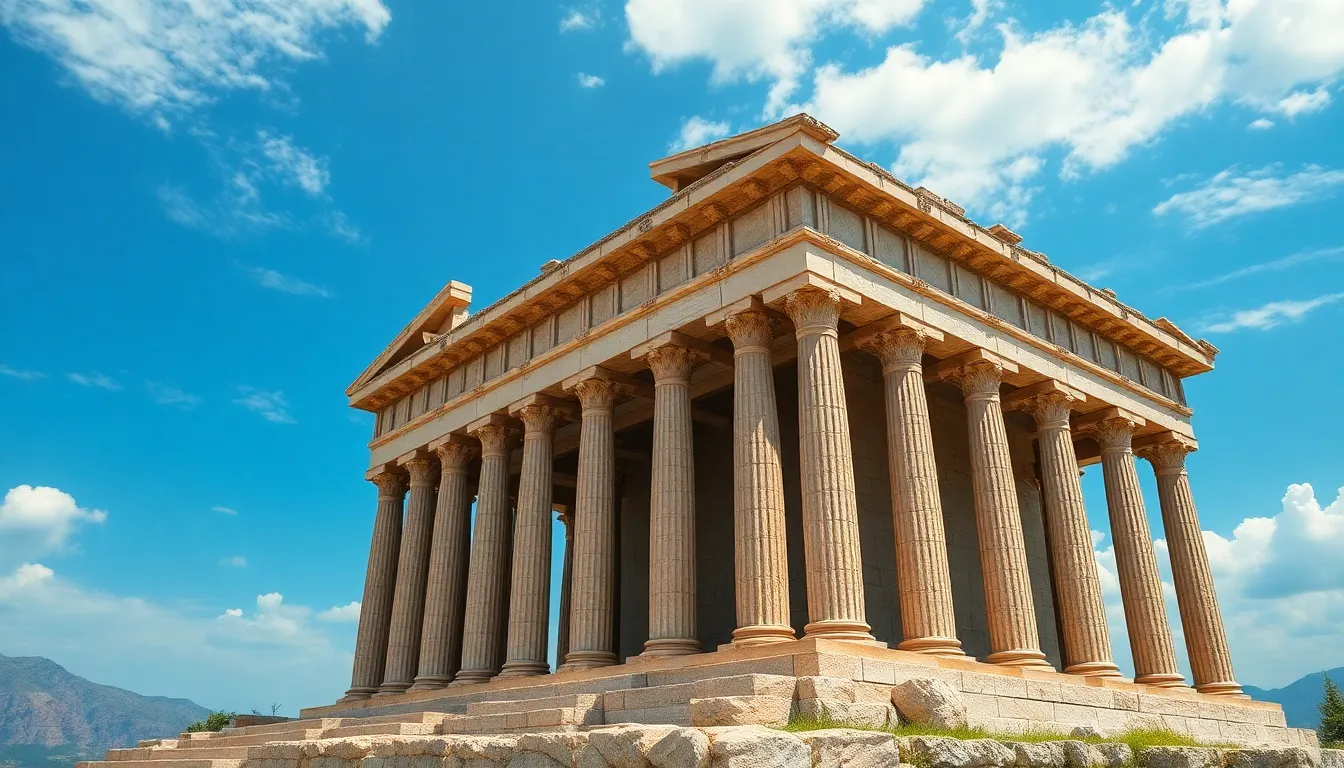The Temple of Hephaestus: Craftsmanship and Divine Inspiration
I. Introduction
The Temple of Hephaestus, also known as the Hephaisteion, stands as a remarkable testament to the artistry and architectural ingenuity of ancient Greece. Situated in the Agora of Athens, this temple was dedicated to Hephaestus, the god of fire and craftsmanship. Its presence highlights the significance of craftsmanship in ancient Greek culture, where the act of creation was often seen as divinely inspired. This article will explore the temple’s historical context, architectural features, artistic mastery, craftsmanship techniques, religious practices, and its cultural legacy.
II. Historical Context
The Temple of Hephaestus was constructed between 449 and 415 BCE, during a period of significant artistic and architectural development in Athens, often referred to as the Classical period. Influenced by the earlier structures of the Doric order, the temple embodies the principles of harmony and proportion that defined Greek architecture.
Hephaestus, the patron of metalworkers, sculptors, and craftsmen, plays a crucial role in Greek mythology as the god who symbolizes the intersection of divine inspiration and human creativity. He was believed to have created magnificent artifacts for the gods and heroes, blending the earthly with the celestial.
Located strategically in the Agora, the temple served not only as a place of worship but also as a reminder of the importance of craftsmanship in Athenian society. The Agora itself was the heart of Athenian public life, where commerce, politics, and religion intertwined.
III. Architectural Features
The architectural design of the Temple of Hephaestus adheres to the Doric order, characterized by its sturdy columns and simple yet powerful aesthetic. The temple features:
- Six columns at the front and back, with thirteen columns on each side.
- Distinctive friezes that depict mythological scenes and are integral to the temple’s narrative.
- A peripteral design, encircled by columns, which enhances its grandeur.
Unique structural innovations, such as the use of entasis (a slight curvature in columns), create an optical illusion that enhances the temple’s aesthetic appeal. Compared to other significant temples of the era, such as the Parthenon, the Temple of Hephaestus remains remarkably well-preserved, showcasing its architectural prowess and the skill of ancient artisans.
IV. Artistic Mastery in Sculpture
The temple’s friezes are notable for their rich narratives and intricate artistry. They depict scenes from Greek mythology, including:
- The labors of Theseus, highlighting heroic feats.
- The contest between Athena and Poseidon for the patronage of Athens.
These artworks were crafted by renowned sculptors of the time, with many attributing the work to notable figures such as Phidias. The symbolism in these artistic representations serves to reinforce the values of bravery, skill, and divine favor, reflecting the societal ideals of Athenian culture.
V. Craftsmanship Techniques
Construction of the Temple of Hephaestus involved a variety of materials, most prominently:
- Local limestone for the structure itself.
- Marble for the decorative elements and sculptures.
Ancient artisans employed tools and methods that exemplified their expertise, including:
- Chisels and hammers for stone carving.
- Scaffolding and levers to assist with the heavy lifting of materials.
The preservation of craftsmanship traditions through the ages can be seen in various modern practices inspired by ancient techniques. The legacy of these artisans is evident in the way contemporary craftsmen approach their trade, often looking to the past for inspiration.
VI. The Temple’s Role in Religious Practices
The Temple of Hephaestus served as a vital center for worship and religious activities dedicated to the god of craftsmanship. Ceremonies and rituals included:
- Offerings of tools and crafted goods to honor Hephaestus.
- Festivals celebrating artisans and their contributions to society.
As a focal point for artisan worship, the temple fostered a community of craftsmen who gathered to pay homage to their divine patron. The influence of the temple extended beyond Athens, impacting local and regional religious practices, as artisans from various areas sought to connect with the divine through their work.
VII. Cultural Legacy and Influence
In modern scholarship, the Temple of Hephaestus is often studied for its architectural significance and its reflection of ancient Greek values. The temple has influenced later architectural styles, particularly during the Neoclassical period, as architects drew inspiration from its grandeur and symmetry.
Preservation efforts have ensured that the temple remains a significant tourist attraction today, allowing visitors to experience its historical and cultural importance firsthand. The ongoing research and restoration projects continue to shed light on the craftsmanship and artistry of ancient Greece.
VIII. Conclusion
The Temple of Hephaestus stands as a remarkable symbol of craftsmanship and divine inspiration in ancient Greece. Its architectural beauty, artistic mastery, and role in religious practices have left an indelible mark on history. The temple not only reflects the values of its time but also invites us to explore the enduring legacy of art and architecture that continues to inspire generations. As we delve into its historical and cultural significance, we uncover the profound connection between craftsmanship and the divine that has shaped human creativity throughout the ages.




